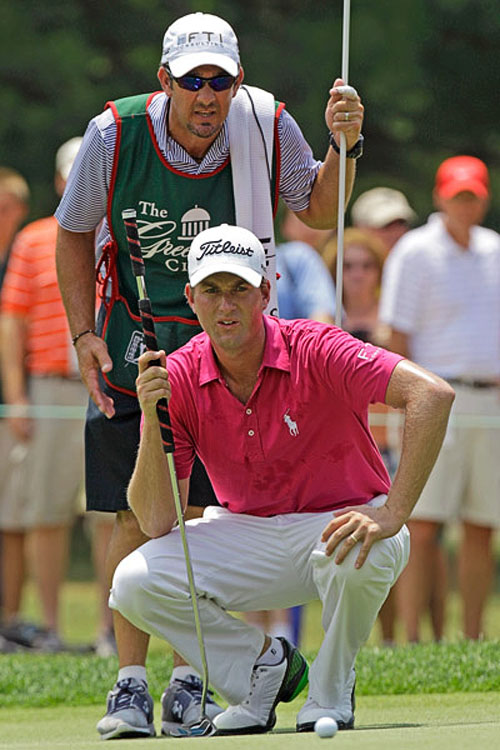
Perhaps you’ve seen it on your local course—a weekend golfer using the chin or navel to anchor an extra-long putter on the green. Maybe you’ve only ever seen them on television, where 15 of the 94 official PGA Tour events over the past two years (including three of the past five majors) have been won by linksmen employing the technique. From the suburbs to the pros, the practice has been steadily integrated into the game over the past three decades. And it appears that the United States Golf Association and the Royal & Ancient Golf Club of St. Andrews in Scotland have finally had enough.
With their announcement of a proposed ban on anchor-putting, the two main governing bodies in the sport sparked a showdown between tradition and innovation, one that brings into question the very definition of what it means to play golf.
The tour, for its part, is predictably divided on the issue; 63 percent of its players have vociferously argued against it, while other prominent stars like Tiger Woods and Rory McIlroy have supported the motion with equal vehemence. Those who would like to see the ban instituted suggest that there might be a growing competitive imbalance gained from the technique, which provides more stability and therefore requires less effort on the part of the golfer to establish an even stroke. Anchoring the putter, it is argued, undermines the entire spirit of a game that is meant to reward those with a steady and carefully coordinated swing.
But the numbers don’t seem to back them up. The upper level of PGA putting statistics are not overpopulated with anchoring golfers—in fact, there are no prominent long-putters to be found among the top 25 in any major putting statistic.
“There is no compelling data to say one is better than the other,” R&A Chief Executive Peter Dawson said of anchoring versus conventional putting. “It’s an individual thing for individual players. But I emphasize, the reason for proceeding with this rule change is not performance-related. It is about defining what is a golf stroke.”
And this is where the central question of this whole dispute arises—why should we even want to define a golf stroke? If there is no convincing evidence to support the claim of an unfair advantage on the green, then why reduce the number of options available for players to develop and customize their own style? What feels right to one person will invariably feel awkward to another; it is the same reason that some people ride a snowboard facing left while others face right, or why a cyclist might be more comfortable with drop handlebars over flat ones.
The proposed anchoring ban has nothing to do with protecting the tradition or integrity of golf. Sports, as with any other cultural institution, are forever malleable; golf has evolved from a pastime first played by shepherds on the coastal, topsoil-covered sand in Scotland—where they would rely on the sections of terrain grazed closely by their flock—to the lush landscaping and NASA-grade alloys that drive the sport today, and the changes are, almost without exception, viewed as positive trends in the ongoing progression of the sport. No one at either organization is calling for a return to the days when woods contained wood and irons were actually made of iron.
A ban would be a clear step backward, and despite all the assurances that this move is not intended to stifle creativity among golfers at any level, that is exactly what would happen if it goes into effect. Golf has stagnated in recent years, as the rising costs and extensive time commitment required to put in a round have dulled its allure among the recreational public. Instituting guidelines that force participants to conform to an arbitrary historical convention of the game only exacerbates the problem, regardless of the motivation behind the ruling.
The USGA and R&A have positioned themselves as solemn and resolute stewards of a game whose roots stretch back more than five centuries. If golf is to be allowed to move forward, it may just have to be done without them.

